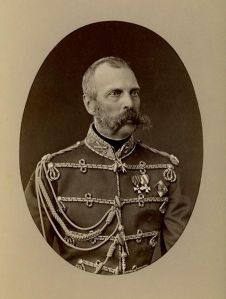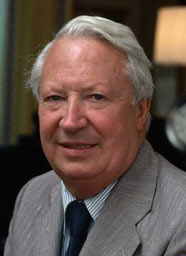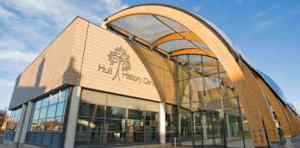The IHR’s new blog has now been launched, covering news and activities from across the whole Institute. All of the old posts from here can be found at the new location, and there will continue to be frequent updates on all the IHR’s digital projects.
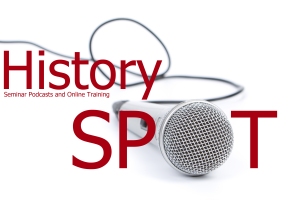 This is my last post for History SPOT and the last blog post for this particular blog. The History SPOT blog is closing down after almost four years. That doesn’t mean that the History SPOT website is closing down; it’s just in the process of a reinvention alongside other changes occurring with the Institute of Historical Research’s online presence.
This is my last post for History SPOT and the last blog post for this particular blog. The History SPOT blog is closing down after almost four years. That doesn’t mean that the History SPOT website is closing down; it’s just in the process of a reinvention alongside other changes occurring with the Institute of Historical Research’s online presence.
Over the coming months you will begin to see changes with the History SPOT website. First, the podcasts have just moved over to the IHR website, integrating them with the seminar pages. In addition IHR podcasts are now appearing on iTunes-u; You Tube; and the School of Advanced Study website. This part has actually been happening since late last year.
Second, the History SPOT website will become solely a research training platform, moving the focus entirely towards training courses. In this regard we have a lot in the works already.
Material Cultures
In partnership with the University of Kent and the Museum of London the IHR have been helping to organise a series of workshops around the topic of material culture. These workshops have looked at the meaning of objects, their historical uses, and different methods for analysis. In 2014 the results from these workshops will be redeveloped for presentation online in the form of a FREE short course.
Managing your data
In December the University of Hull held the first in a series of workshops on the topic of managing your data as an historian. In February the IHR will be holding a second workshop on this topic and then the University of Sheffield will be holding a third workshop in April. But this is only the start. In 2014 an entire online course will be made available for FREE on History SPOT that will guide you through the research process and enable you to easily and quickly develop a data management plan, often essential for research proposals and useful for research itself.
Palaeography
A year ago the School of Advanced Study published the first module of the InScribe Palaeography materials course on History SPOT. Another module is still in development looking more closely at scripts. This will be ready for launch sometime soon.
All good things…
Although I personally will still have a role with developing these courses I am saying goodbye to the podcast service entirely. I have now moved over to the School of Advanced Study working on digital projects for them, which will, admittedly, intersect with the IHR and History SPOT website from time to time.
It’s sad for me to close down this blog. It was my first one, indeed, it’s because of this blog that I have developed others and spent time investigating and researching blogging practises in more general terms (see my Blogging for Historians blog for some examples of this). I will still be blogging elsewhere as well, such as the SAS Blog and my own research blog, Sixteenth Century Scholars. I hope too to contribute occasionally to the new IHR blog, and it is to this matter that I would like to particularly turn your attention.
Although the History SPOT blog is coming to an end the posts will live on in the new IHR blog that has just been launched. You will find all the posts there alongside the archive from other IHR blogs, all rolled into one place. I’m hopeful that there will still be the occasional review summary of a podcast on this new blog. There will certainly be updates regarding research training online and updates about changes to the History SPOT website as and when they happen.
For now then I will say goodbye and thank you for reading this blog over the last four years. It’s been great fun and I hope it’s also been useful and interesting to you, my readers.
The new IHR blog, including History SPOT blog posts can be found at The IHR Blog. For IHR podcasts take a look at the events section of the IHR website. New podcasts can also be found on the University of London iTunes-u account, the School of Advanced Study website and You Tube pages.
Posted in Project update | Leave a Comment »
On 12 December 2013 the University of Hull will be hosting a one day FREE workshop for History postgraduates and early career researchers to help you better manage your data. The event is called History and Data Management: necessary bedfellows? To sign up to this event email Chris Awre (c.awre@hull.ac.uk), indicating your name, Department and University, plus any dietary or other requirements you may have in attending this event. A number of bursaries are available to help with travel costs so please indicate if you are interested in one of these in your email. For full details about the workshop click here.
This is what Chris Awre from the University of Hull has to say about managing data.
The recent announcement of the first of three events on history research and data management being held by the AHRC-funded History DMT project offers the chance to understand to what extent these two, apparently disparate areas, are linked. Research data are more usually associated with scientific disciplines, computers and equipment churning out numbers that can be analysed in multifarious ways. This image may be stereotypical, if true, but also both hits and misses key points in appreciating the impact that research data has across all disciplines today.
The hit is in the use of computers to produce and store data. This is not a feature simply of science now, though. The field of digital humanities has highlighted the value of computing to non-scientific disciplines, and the ability to apply computing to research questions in these areas. Data centres like the UK Data Archive have long existed to capture  the datasets produced, and have provided valuable resources for subsequent research by others. Whilst this type of research might have been a specialised niche at one point, computing capability now makes it far more straightforward for data to be compiled by any researcher. And if computing can be used in this way, the outcomes of that use, the data, will need managing.
the datasets produced, and have provided valuable resources for subsequent research by others. Whilst this type of research might have been a specialised niche at one point, computing capability now makes it far more straightforward for data to be compiled by any researcher. And if computing can be used in this way, the outcomes of that use, the data, will need managing.
The miss is in the definition of data. Data can be numbers, certainly, but it can also be many other types of material collected together to inform research analysis. The University of Leeds research data management web pages, whilst recognising the scientific origins of data management, describe well the breadth of what can be considered data. The materials gathered by historians, be they numbers, images, multimedia, textual or statistical, can clearly fit within this scope.
At the centre of discussing data management for historians though, is not the ‘data’ per se, but more importantly ensuring that any materials gathered, created, or observed by history researchers are well managed. This ensures they can support and inform the research effectively, and add to the body of knowledge that is generated through research overall. In raising the bar for managing data, it highlights the value that data has. Quite often data acts as the Cinderella to the publication that is based on the data; the advent of data publications (e.g., Journal of Open Archaeology Data) highlights this and provides an additional route for research dissemination.
The History DMT project and the forthcoming events are producing materials to assist with managing data when conducting history research. The AHRC are specifically targeting the work at postgraduate and early career researchers, and all are encouraged to consider how they manage data in their research, either through the events or generally. Come and join us to discuss and feed into the materials being produced, and ensure that history data gets the respect it deserves.
To register for the workshop please e-mail Chris Awre (c.awre@hull.ac.uk), indicating your name, Department and University, plus any dietary or other requirements you may have in attending this event. If you are interested in one of the bursaries please note this in your e-mail. For full details of the event check our previous blog post.
Posted in History DMT | Tagged AHRC, Arts and Humanities Research Council, Data management, research, UK Data Archive, University of Hull, workshop | Leave a Comment »
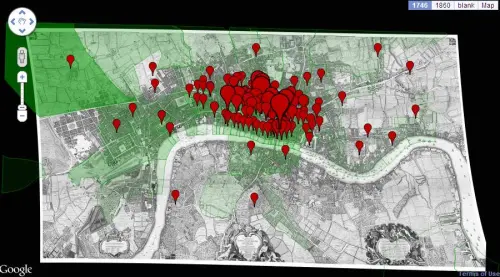
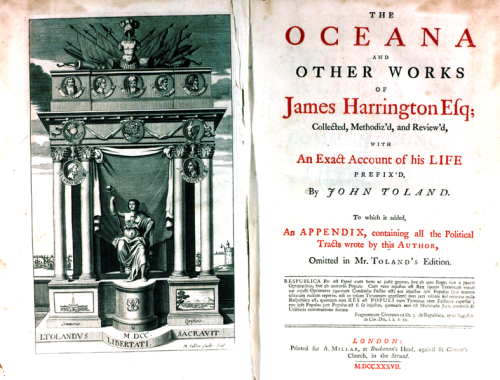
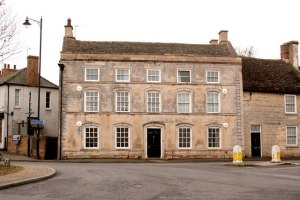 Abstract: The East India Company at Home, Domestic Interiors, Public Histories & Material Cultures’ discusses the context and preliminary findings of a 3-year collaborative research project based in the History Department at University College London. In recent decades, the Georgian country house has featured in films, television, tourism and history as an icon of ‘Englishness’ (and, to a lesser extent, of Scottish, Welsh and British identities). This project contrasts this narrowly national representation of the Georgian country house to the increasingly ‘global’ forces that shaped country house construction, purchasing and furnishing in the Georgian era. Its focus is on both ‘Oriental’ luxury objects and the significance of the country home and its furnishings for the families of the English East India Company. How did the aspiration for an ‘English’ home sustain Company men’s participation in colonialism in India? How (and why) were Indian fortunes domesticated through the purchase of country houses in Britain? What role did Chinese, Indian and Japanese luxuries play in building effective country houses? Addressing these issues has involved the East India Company at Home team in new forms of collaboration, new forms of public history, aimed at illuminating the global underpinnings of British national identities.
Abstract: The East India Company at Home, Domestic Interiors, Public Histories & Material Cultures’ discusses the context and preliminary findings of a 3-year collaborative research project based in the History Department at University College London. In recent decades, the Georgian country house has featured in films, television, tourism and history as an icon of ‘Englishness’ (and, to a lesser extent, of Scottish, Welsh and British identities). This project contrasts this narrowly national representation of the Georgian country house to the increasingly ‘global’ forces that shaped country house construction, purchasing and furnishing in the Georgian era. Its focus is on both ‘Oriental’ luxury objects and the significance of the country home and its furnishings for the families of the English East India Company. How did the aspiration for an ‘English’ home sustain Company men’s participation in colonialism in India? How (and why) were Indian fortunes domesticated through the purchase of country houses in Britain? What role did Chinese, Indian and Japanese luxuries play in building effective country houses? Addressing these issues has involved the East India Company at Home team in new forms of collaboration, new forms of public history, aimed at illuminating the global underpinnings of British national identities.![shutterstock_9709540[1]](https://ihrprojects.files.wordpress.com/2013/07/shutterstock_97095401.jpg?w=300&h=165)
